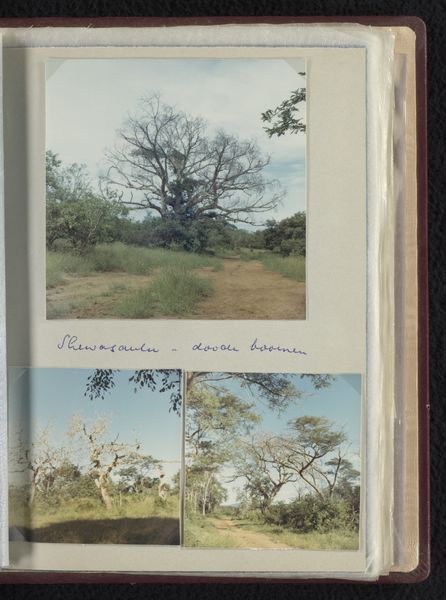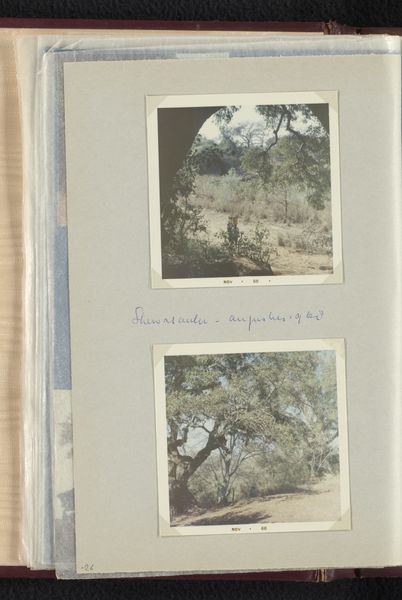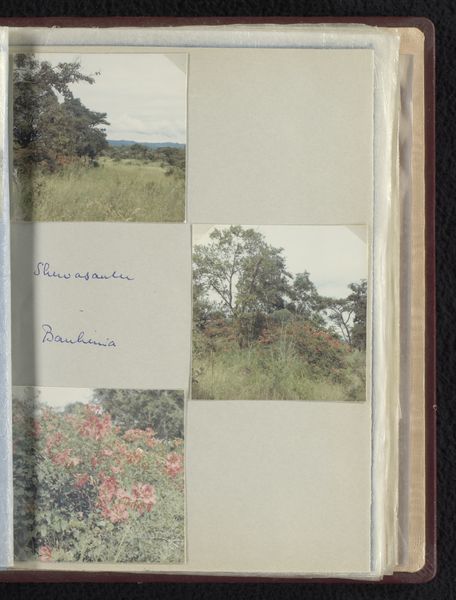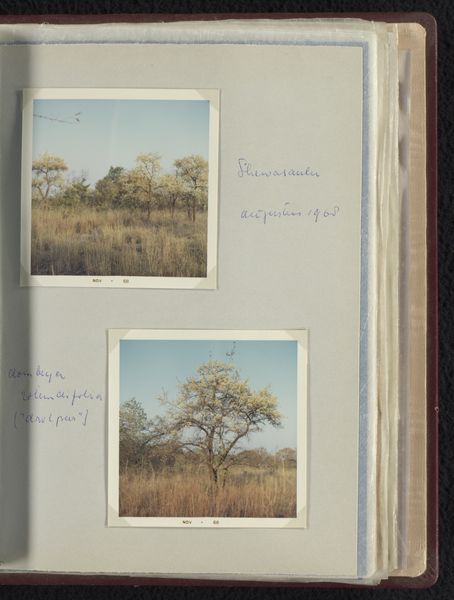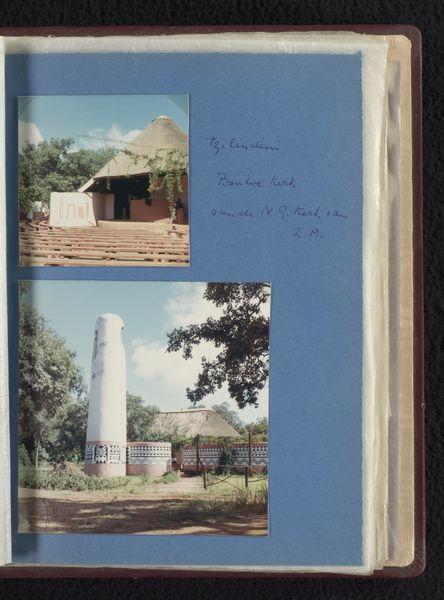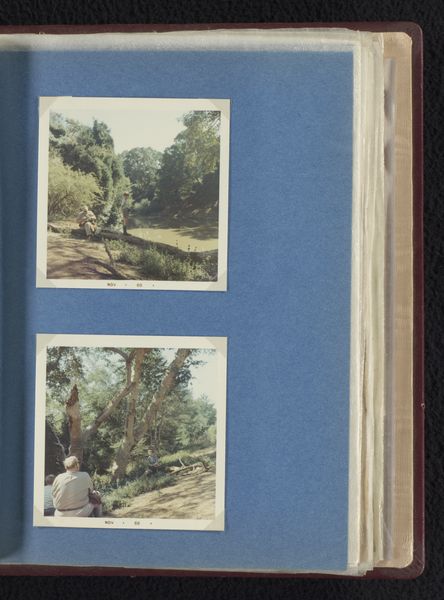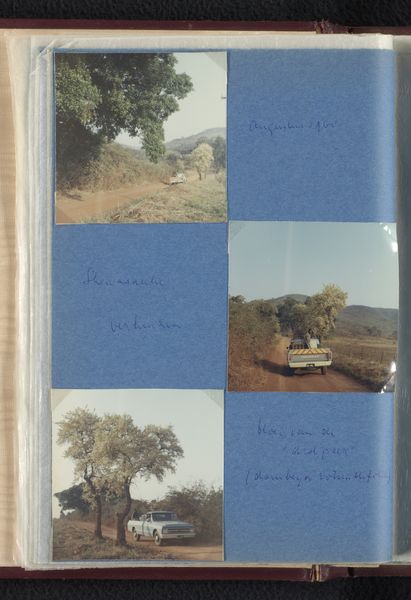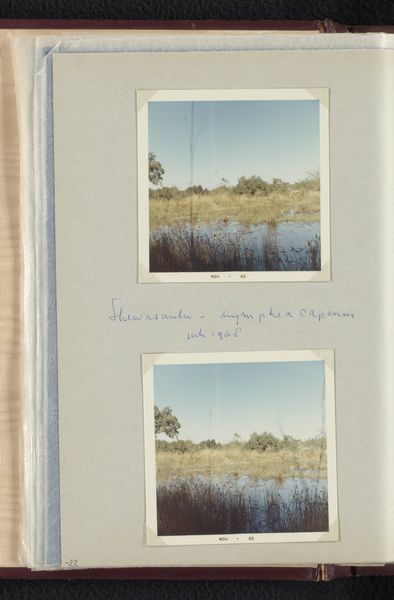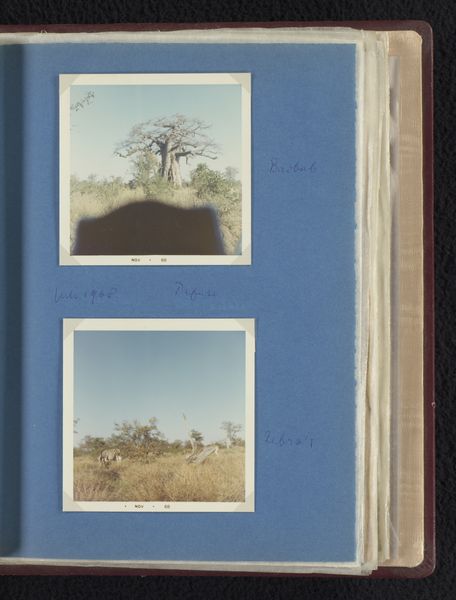
plein-air, photography
#
contemporary
#
plein-air
#
landscape
#
photography
#
coloured pencil
#
realism
Dimensions: height 240 mm, width 190 mm
Copyright: Rijks Museum: Open Domain
Curator: Here we have a photograph, seemingly captured in a personal album, showcasing the "Woonhuis van Willem van den Berg in Shewasaulu, Zuid-Afrika," or Willem van den Berg's house in Shewasaulu, South Africa. It was taken in 1969. Editor: My initial feeling is of isolation. The house seems so low and horizontal, almost hiding in the landscape. It's engulfed by that overgrown lawn, making it look rather secretive and a little melancholy, even under the bright sky. Curator: It's interesting that you pick up on isolation. South Africa in 1969 was, of course, under the heavy weight of Apartheid. Even a seemingly simple image like this carries those implications of segregation and division within the social and political landscape. The fact it is found in a personal photo album invites viewers to remember the public role of art and the politics of imagery during that time. Editor: Absolutely. There’s a deliberate banality here that unsettles me. This picture, almost too casual and unassuming, makes me reflect on what kind of visual narratives get circulated and archived— and by whom. You have to wonder about the photographer's choices: The framing, the slightly bleached-out colors, the focus on nature obscuring the architecture… What kind of a statement do you think the photographer makes with these stylistic choices? Curator: I see it as realism, but with a slight distortion. A presentation of everyday life perhaps meant to evoke something other than that time period's visual aesthetic conventions. The photographer could have meant for it to invite critical and informed discussions on art's public role, engaging viewers on broader politics of the era. Editor: You are probably right. Maybe that’s why this snapshot appeals to me: the inherent friction between the depicted home and the social and political context. It reveals how seemingly simple pictures also mirror the weight of history in ways that still impact the contemporary narrative. Curator: Indeed. The photograph as a form becomes quite important in documenting space and place within shifting political dynamics. Editor: It certainly is fascinating how one image can hold so much. Thanks for the chat. Curator: Likewise.
Comments
No comments
Be the first to comment and join the conversation on the ultimate creative platform.

